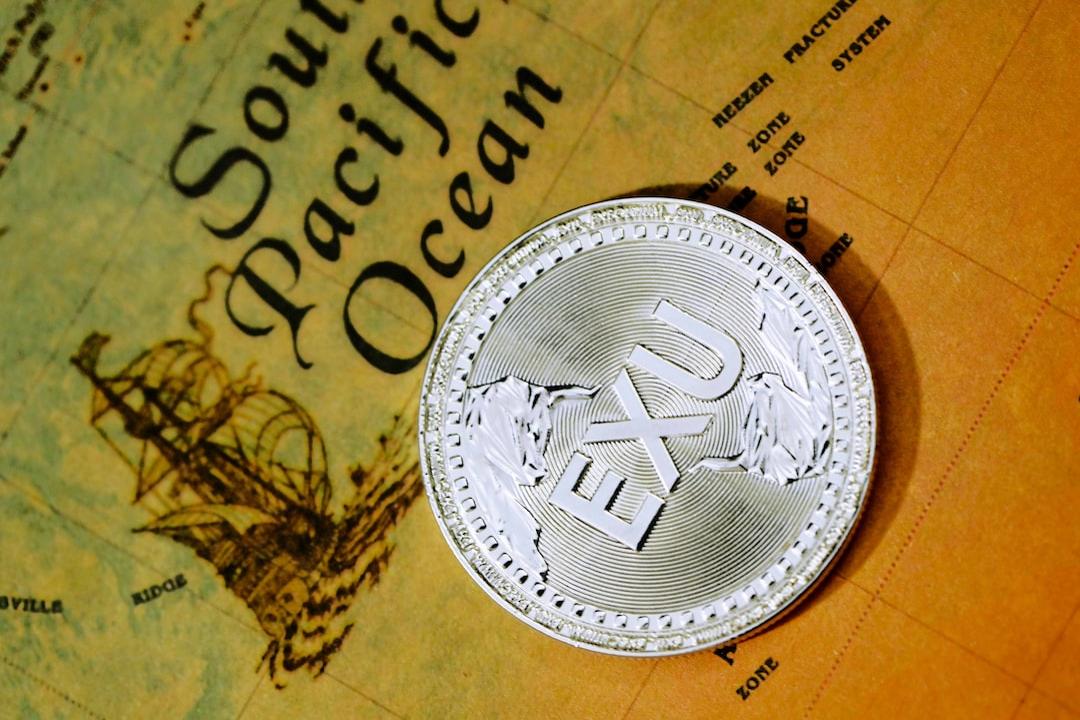If you believe that the future of Web3 is lifestyle-oriented and widespread, then Morph is worth your attention. This article is based on a piece written by Bingwa, organized, translated, and authored by Deep Tide Techflow.
(Background Brief: Overview of Consumer-Grade Public Chain Morph: Current Ecological Development and Future Analysis)
(Background Supplement: The “Treasure Map” of Consumer-Grade Public Chain Morph: How Did Early Users Discover the Hidden Gems?)
1. Why is consumer-grade public chain a necessity in this industry cycle from the perspective of industry cycles?
In the past few crypto cycles, from DeFi Summer to the NFT frenzy, and then to the leap in infrastructure and the explosion of MEME narratives, the industry has been continuously innovating itself. However, today, the increasingly rich infrastructure is in stark contrast to the shrinking liquidity and slowing user growth. This structural contradiction has become the biggest dilemma in the current industry.
Especially in the public chain arena, the previously dominant narrative logic was: “faster TPS + lower Gas fees + more DeFi applications.” But as the technical gap narrows and innovations converge, relying solely on “hyped new public chains” is rapidly losing effectiveness, with speculative momentum diminishing and real demand shifting.
To put it simply: people no longer want “faster casinos,” but rather “usable chains.” Against this backdrop, new-generation public chains like Morph, which are centered around consumer scenarios, are becoming an inevitable product of the industry’s cyclical evolution.
There are two deeper driving logics here:
1. From a macro-structural change perspective, Web3, as the next-generation internet infrastructure, must transition from purely financial attributes to accommodate real consumption, social interaction, content, and other broader needs.
2. From a micro-evolutionary trend, the industry’s traffic logic must be rebuilt. The future growth engine must be experience-driven natural traffic, meaning everyday high-frequency scenarios where users are willing to stay and consume.
To support such a transformation, traditional finance-oriented public chains (like those overly focused on DeFi) are inherently unsuitable. Consumer-grade public chains will become the new traffic entry points and experiential bases. Morph may be positioned correctly at this cyclical turning point.
2. Morph: Breaking Through the Technology and Strategy of Consumer-Grade Public Chains
1. Core Technical Advantages: Balancing Performance and Security
Overall, the architecture is not much different from other public chains. In short, it mainly uses consensus and execution sorters for state validation proof mechanisms and data availability. On top of that, the project has its own innovations and optimizations.
1. Hybrid Rollup Innovation (Optimistic + ZK), Morph has independently created the Optimistic zkEVM + Responsive Validity Proof (RVP) mechanism, combining the low costs of Optimistic Rollup with the high security of ZK Rollup, significantly compressing the challenge window, improving withdrawal speed, and reducing overall costs.

2. Decentralized Sorters: Overall, it no longer relies on a single point sorting center, fundamentally alleviating the biggest pain point of traditional Layer 2, which is MEV monopoly and transaction review, ensuring fairness and high availability in transaction processing.
3. Modular Architecture: Supporting independent upgrades and evolution of different modules, it can flexibly adapt to more new expansion suite requirements in the future, such as EIP-4844, SP1 zkVM, etc., ensuring Morph’s long-term technical evolution capability.

From a technical perspective, Morph’s overall construction logic is not about single breakthroughs but rather systemic integration and innovation, ensuring a balance among performance, security, and experience.
2. Strategic Positioning Advantages: Extending from Transactions to Life
1. Centered on “consumer scenarios,” Morph is not merely a chain that talks about “TPS” or “DeFi,” but is clearly positioned as an infrastructure serving “on-chain consumption applications” (entertainment, social networking, lifestyle). The directions Morph focuses on—on-chain content, on-chain socializing, on-chain entertainment, and on-chain payments—are all scenarios that can genuinely activate the daily needs of hundreds of millions of users, rather than merely being part of a financial speculation loop.
2. Combining strong resources and traffic with platforms like Bitget to create potential synergy effects, sharing users, brands, and channels, has accelerated the introduction of real users and ecological cold starts. In fact, for such projects, traffic barriers are extremely important in the early stages. Public chains with stable and efficient traffic entry points will find it easier to build early ecological potential.
3. Beyond the U Card, creating a Web3 version of Alipay, with continuous enhancement of product + brand power.
With strong backing from Bitget and Singapore’s first-class payment institution DCS, Morph’s black card quickly ignited industry discussions upon its launch, sparking widespread debate within Web3 while successfully breaking into the Web2 consumption finance system.
Despite some controversies at the operational detail level, there is almost a consensus on one point: Morph’s black card, as a “on-chain + off-chain integrated” consumer-grade product, has initially validated the existence of broad real demand for high-frequency connections between on-chain financial services and real life.
What lies behind this is Morph’s in-depth consideration and regulatory layout of long-term strategies. Although its surface form is similar to traditional “U Cards,” in essence, it has surpassed tool properties, resembling a foundational infrastructure that connects on-chain financial accounts, off-chain consumption rights, and compliant clearing networks in Web3.
The Morph black card is issued by DCS, a licensed bank based in Singapore, and completes the entire process of card organization integration, product structure review, KYC, AML certification, and risk control auditing under the supervision of MAS (Monetary Authority of Singapore).
Moreover, Morph does not position the black card merely as a “payment tool” but introduces a complete rights system that high-end credit cards in the Web2 world can enjoy. This accumulation of rights not only makes the black card scarce but also reflects Morph’s deep consideration of “consumer-grade entry”: allowing on-chain identities to serve as certificates for enjoying exclusive experiences in the real world, enabling crypto assets to truly become “credit assets” that can be used daily.
Morph’s painstaking strategy reflects the project’s overall core appeal for long-term development, which is not merely to profit from a passing trend but rather to consider building a compliant, secure, convenient, and globally applicable system from the entire underlying strategy.
4. Underlying Account System Supporting Ecological Closed Loop: Card Issuance is Not the End, But the Beginning
The Morph black card is not an isolated financial product; at a deeper level, it is part of the entire Morph account system. This account system not only supports card issuance and payment functions but will also become the core infrastructure for building Web3 financial management, identity, points, and membership systems in the future: not only supporting on-chain accounts binding off-chain identities but also supporting functions such as crypto asset storage, exchange, and wealth management, similar to a Web3 version of “Alipay.” Furthermore, it can embed more Web3 applications and third-party financial tools to achieve an open financial ecosystem.
On this basis, Morph is constructing a system where “accounts are the financial entry points”: every card, every…
Accounts, not just payment tools, but also the core identity hub connecting various Web3 services (consumption, transactions, financial management, social).
III. Potential Challenges and Long-term Value of Morph
Although consumption and applications are recognized as the next growth curve in the industry, the difficulty of cold start and operational requirements far exceed protocols such as Defi.
Firstly, from a risk perspective, there are future difficulties that need to be continuously overcome in terms of landing cycles, industry competition, and other aspects.
Challenge 1: The landing of consumption scenarios requires continuous and solid operation
The controversy over the benefits of the previous Morph black card and platinum card is actually a microcosm of the operational difficulties. It not only tests the project’s understanding of the “card” itself but also the effective design of user experience. The nature of the product still belongs to the category of “consumer-grade financial services”. Users not only focus on benefits and user experience but also make medium- to long-term choices based on factors such as service continuity, safety, and compliance. Although the black card has opened up some space, the project still needs to truly make users willing to use it naturally in their daily lives; and continuous user education is also needed.
Challenge 2: Intensified competition, brand building, and ecosystem construction need to be more rapid and effective
With Morph pioneering the narrative window of “consumer-grade public chains,” it can be foreseen that more L2s, and even some new types of L1s, will quickly follow suit, layout on-chain consumer markets, and even some public chains with high TPS as selling points have begun to lean towards “content ecology” layout. Ethereum Rollup systems may also join the competition for consumer narratives in the future. In this case, how to establish brand identity and initial ecosystem construction before the narrative is fully internalized will directly determine Morph’s position in the industry competition. This requires not only clarity in “what it is” but also making users “enjoy using it.”
Despite the long cold start cycle and high operational requirements of consumer-grade public chains, from Morph’s current technical architecture, strategic layout, and resource coordination capabilities, it has multiple potentials to cross early pains and move towards the next growth curve:
Value 1: Consumer application chainization is a long-term trend, and Morph’s positioning is highly scarce
Against the backdrop of the industry gradually moving towards stock competition, public chains that can truly connect on-chain applications with users’ daily consumption scenarios are extremely rare. From the demand side, Web3 users are no longer satisfied with DeFi speculation but expect on-chain experiences that can carry real, continuous, high-frequency life experiences, such as payments, social interactions, entertainment content consumption, etc. From the supply side, most L1s and L2s are still in native financial applications (DEX, lending) and short-term narratives (such as MEME), and there are very few projects that truly focus on on-chain consumer experiences and have landing capabilities. As one of the pioneers in consumer-grade public chains, Morph is expected to capture users’ minds in the next 2-3 years, establishing a scarce position as the “on-chain daily consumption gateway.”
Value 2: Morph’s technology is highly scalable, capable of adapting to more narrative changes in the future
Thanks to its modular design and hybrid Rollup architecture, Morph can adapt very flexibly to industry changes in the future. For example, with the advancement of sharding technology, Morph can quickly reduce data availability costs; by promoting decentralization through Sequencer, it can build a more secure and censorship-resistant underlying infrastructure; in the future, it can also be compatible with more on-chain consumer applications, such as on-chain advertising, on-chain subscription services, and other new areas. In general, Morph is not a public chain bound by a single technical framework but an open platform that can dynamically evolve and evolve synchronously with the industry, with long-term technological vitality.
Value 3: Clear resource and capital advantages, with significant long-term resource synergy potential
Setting aside recent public opinion influences, in the medium to long term, Morph has strong traffic, channel, and brand resources behind it, such as Bitget and other powerful platforms, which can continuously inject users and funds into the on-chain consumer ecosystem; in the future, it is expected to close the loop between on-chain and offline consumption, forming a unique user barrier; on the capital side, Morph has received strategic investments from multiple first-line funds, providing solid resource guarantees for future ecological support and application incubation.
Value 4: The account system is the foundation of the super entrance, with a solid system moat
Morph’s core lies not in “how many cards are issued” but in building a super entrance that can carry asset management, identity binding, on-chain payments, points, and even Web3 social interactions through the account system behind the card. In the future, all users’ on-chain activities can expand into various scenes such as financial management, lending, payments, membership, etc. This will be the infrastructure threshold for all consumer-grade applications to grow. Therefore, Morph’s black card is not an isolated product but an important part of building the “account as a financial hub” system. In the long run, this system is the bottom line that truly sets it apart from other Layer2 projects.
IV. Conclusion: Morph, poised to become the super entrance of on-chain life infrastructure
From the current industry trends, we need to acknowledge that Web3 is undergoing a profound switch in underlying logic, transitioning from asset speculation to real consumption, from financial leverage to life experiences, and from pure on-chain stacking to a transformation of on-chain + off-chain fusion. In this trend, Morph provides a comprehensive systematized answer in terms of technology, strategy, and resource synergy. Although its recent public opinion may not be very favorable, looking at the longer term, if it can steadily advance application landing, quickly complete cold start, and gradually expand the scale of real users, then Morph’s long-term value will not just be a public chain but the next generation of on-chain life infrastructure, and may even become the Alipay, WeChat, or super entrance of the Web3 world.
Comprehensively, as a consumer-grade public chain with a clear positioning, solid technology, and forward-looking strategy, Morph has indeed stepped on an important node in the industry narrative transformation. In the future, whether Morph can truly realize this potential depends crucially on its operational capabilities, its ability to occupy users’ minds, and the continued construction of its ecosystem moat. From an investment research perspective, if the key phrase of the previous cycle was “protocol depth,” then the key phrase of the next cycle is “experience breadth,” and what Morph is trying to connect is the entire user lifecycle path of “assets – identity – consumption – credit.” We need to acknowledge that in a new cycle that bids farewell to extensive growth and turns to refined operations, Morph is trying to provide a more realistic answer closer to the future vision, on-chain life, not just on-chain speculation. And this road may be the necessary path for Web3 to truly move towards the mainstream and truly change the world. If you believe that the future of Web3 is life-oriented and popularized, then Morph is worth continued attention.

